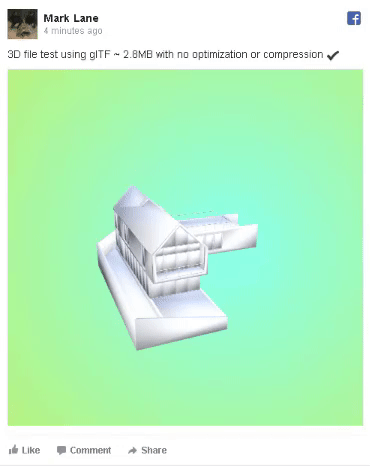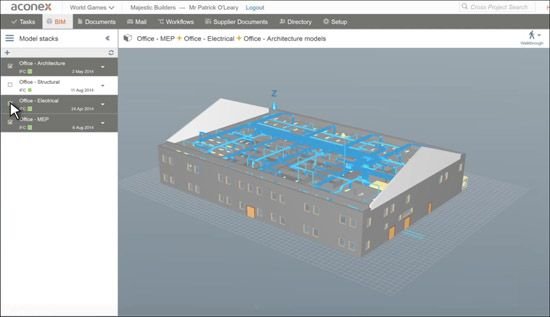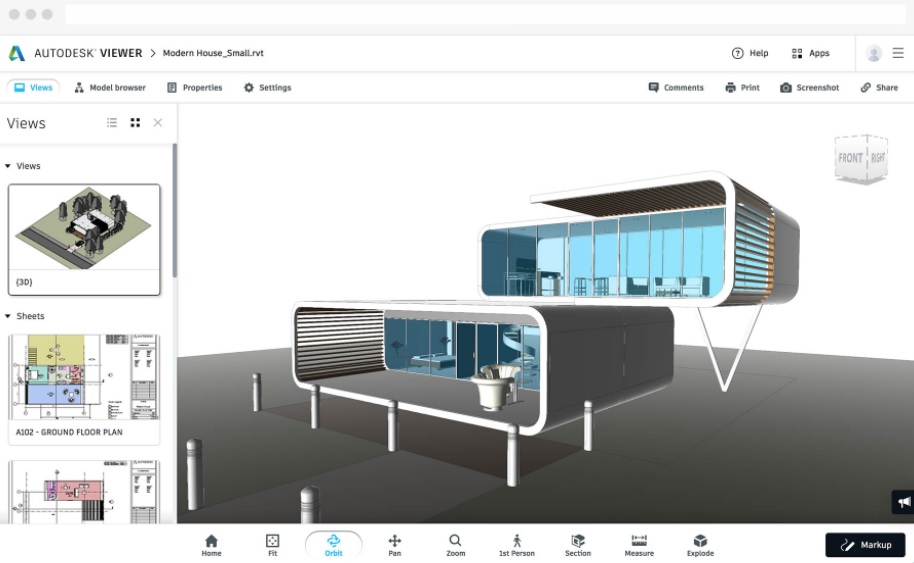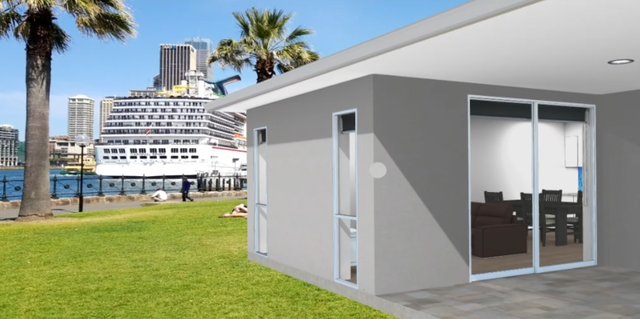If a picture is worth a thousand words...what is a 3D model worth?
Facebook has recently accounced that it has added support for the glTF 2.0 format of 3D files, allowing publishing of highly complex models via a compact open source file format compatible with the latest geometry compression extention from Google.
Google Draco is a relatively new project targeting 3D geometry compression. Their partnership with Khronos Group on their glTf file format will go a long way to making 3D models ubiquitous on the web. The Draco compession extension affords up to 12x file size reduction, meaning that even the most complex architectural models can be viewed online with some basic optimization.

The same as an image upload, Facebook's new 3D glTF viewer works with a simple drag and drop utility.
With such an active developer community behind these projects, it hasn't taken long for these tools to be integrated into three.js and babylon.js for easy web-based 3D model interaction.
With the aid of these open-source tools, there is no reason for many platforms to not support 3D models.
BIM ONLINE
A common pain-point that I've experienced in my career is the difficulty in sharing 3D data with clients and colleagues efficiently. Large file sizes and a myriad of incompatible file types have added increasing friction to users, hampering BIM adoption.
In the case of text and image files, there is no bottleneck in the exchange of information since everyone is able to view and transmit data efficiently. The same is not true for 3D file formats. The cost of this inefficiency in the construction industry is easily identified via contract variations, aborted works, and relentless coordination issues.

Aconex have gone a long way toward overcoming this via Aconex BIM, a 3D model explorer lean enough to function smoothly in a web browser. Unfortunately this app only supports one file type and is limited to members only.

Similarly Autodesk offers a free and open model viewer that supports many different file types and even hosts models for sharing for up to 30 days. However it doesn't offer much more than the most basic navigation tools.
My Next Project
With the ability of Google's Draco compression to shrink complex models to a size that could fit on a floppy disc, there lies an opportunity to combine the latest open source VR & AR technologies to provide context to 3D data for effectively communicating a design.
Having published a number of VR & AR projects myself I feel there is potential for a new web-based 3D model viewer with support for Apple's ARKit and Google's ARCore, as well as WebVR. I hope to provide a free and open platform for efficiently viewing and transmitting 3D models, exploiting WebVR tools to communicate a design by taking a clients perspective that is as close to the real-life finished product as possible.

Congratulations @markjlane! You received a personal award!
You can view your badges on your Steem Board and compare to others on the Steem Ranking
Do not miss the last post from @steemitboard:
Vote for @Steemitboard as a witness to get one more award and increased upvotes!
Congratulations @markjlane! You received a personal award!
Click here to view your Board